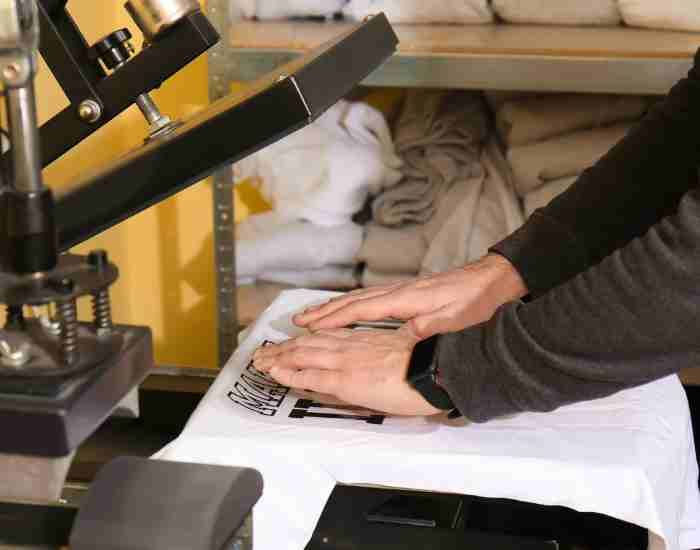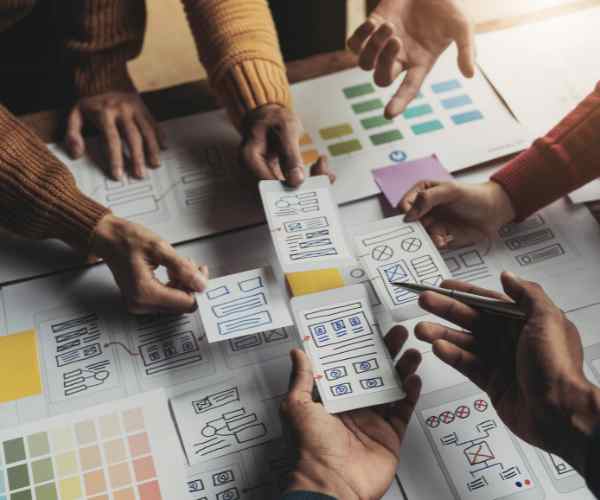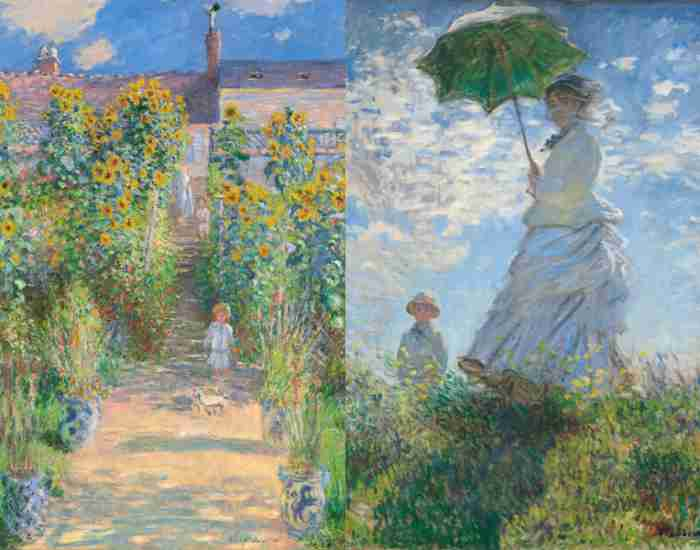Let us start exploring Figma, one of those tools to reckon with and is changing the collaborative design landscape and Figma sorts out many of issues for those who have for example had to manage few design files, had to deal with the iteration of reviews or have run into the problem of alignment of teams.
Figma is not yet another design tool but it is a workhorse that offers its users the experience of colloboration in real time on the design in the ‘Almost’ sense of the word. Being in the cloud Members of a team can work and see the same project from any location irrespective of timezone and this kind of flexibility is needed in today’s world where remote working rules the globe. It would be a good example to visualize a brainstorming session with your team, but when all participants are in various locations — but Figma make this possible.
In this post, I want to provide readers with a more detailed guide on how to work with Figma effectively as a team. Apart from organization we will also look at the workspaces and most importantly, collaborative tool offerings, communication as well as team dynamics and creativity will be covered. So the intent is to make sure that the design to be made is simple so as to make it possible to work to be produced for the superficial aesthetics.

Setting Up Your Figma Workspace for Collaboration
Creating an organized Figma workspace is crucial. It’s quite literally the first step in collaborating with your team effectively. Think of it as an architect’s first step in constructing their dreams. Without this crucial first step, things can get really awful.
Proper Management of Files and Components for Maximum Result
Always remember, having a standardized design should always be enforced especially in a team. Why? Because if there is visual dissonance and diffusion, it wastest a lot of time and negatively affects the quality of output. Here are some tips I’ve found helpful:
Establish a Design System Early On: Establishing a design system which contains the correct colors, typography, and the component styles can Take some time but in the long run it will pay massive dividends. This enables the team to have a don’t worry be happy and stress free environment.
Organize Your Components: Figma’s component functionality can be utilized to develop distinguishable elements such as buttons, icons alongside other UI components. This not only increases coherence, but because it allows for timely revisions, due to the fact that altering it in one region automatically modifies it everywhere!
Layer Structure and Framing: Utilize frames to cluster connected objects. This does a lot to prevent disarray and perplexity. Think of it this way, when you’re working on fift different screen for an app, it can become a hassle for the members to locate, so creating individual frames for each screen can greatly streamline the process.
H3: Controlling Access and Collaborating With Others
In this section, we will explore the management of permissions with your colleagues. Figma makes adding your colleagues to the workspace easy, but understanding how their created workspace will be controlled is more interesting.
Invite Team Members: Click on the upper right “Share” button in the Figma File. You can also add them by their email addresses or through a link you’ve prepared.
Define Roles: A parameter that distinguishes Figma from the rest is its allowance to assign roles to the team members such as editor roles and commenters roles. Such collaboration is important for the system to run smoothly. Consider a situation where you are developing a new website with a design agency which has designers, clients and developers. Setting these roles avoids ambiguity, and the relevant person is focused on doing the tasks efficiently.
Continuous Updates: I also consider it vital to update your colleagues, and the clients about significant changes in the project theme or decisions you have taken or will take during the transition phase of the project. Keep your communication open so that you can tell your colleagues what has changed and what major decisions have been made regarding the design.
Utilizing Figma Collaboration Functions Live
The collaboration option in Figma allows designers to work together on a project in real time. It’s a defining trait of the software; it allows several team members to edit the same file at once, leading to a great improvement in the creative process.
Editing In Real Time and Providing Feedback
Figma has a concept of live editing which lets its users, imagine a meeting with a couple of other teammates in which brainstorming goes on with people talking what comes to their minds, it’s exactly that E-Figma turns that vision into reality.
Everyone Gets Simultaneous Access to Different Tasks With Live Editing: Some team member might focus on mobile UI app structure or make some modifications on colour or fonts. The advantage of this instantaneous editing is that everyone can observe changes taking place in real time within the app. Apart from aiding in the speeding up of the decision-making process, it has also proven to enable the thinking process to maximize the chances of being creative.
Real-Life Use Case: There was a time when I and my team were working on designing an application for a user. All of us signed into Figma and it felt like we were in the same room when we were discussing and sharing our thoughts, regardless of the distance. Being able to give feedback in real time allowed us to collaborate with each other to perfect the design, and that made the whole experience amazing. It was an amazing experience where the essence of married design was aptly demonstrated.
Commenting and Feedback Loops
Most people view feedback as an obstacle that slows down the design process, however, Figma’s comment tool has changed that story completely. Instead of having ugly long email replies containing feedback, you can just allow your collaborators to leave comments on the design document.
Actionable Comments: If you’re making comments, approach it with clarity in your mind rather than being vague. For instance, “Can we explore a lighter shade for this button? It might stand out more,” is a much better suggestion than “I do not like this button.” This type of suggestive feedback is very effective as it shows precisely how the designers should amend the design and why.
Example Scenario: Design drafts require multiple reviews, and once a client goes through one, they are bound to leave some comments regarding improvement right on the file on the online medium. Instead of finding the aspects that require adaptation in the design draft through emails, you can quickly correct the client’s feedback directly in Figma. This makes so much more sense and everyone avoids confusion over the change that is needed, thus making the edits even more efficient.
Figma Version Control and History Management
Jumping into the design world is taxing, especially when the client is always hovering around demanding changes to the design. One minute everything is seemingly in order, and the other a client is asking for changes that leave you at a loss. Figma takes care of this problem by enabling a mix of version control and management of history in the process of design.
Tracking your edits and updates
The version history ability is one of the many features that Figma offers. It is designed to track alterations or changes to your design files. Imagine this situation: it’s late at night and you’ve got a million things to do for this one project. But as you go along, you see that something just isn’t right and something feels off to you. Maybe a color was changed or amending a certain layout does not feel right. All you need to do is to take a few clicks and then just revert back to the previous version thanks to the version history.
To get the version history, you find the file name on the top of the screen, click it, click on show version history, and there you go! You have the view of all the previous versions with the time stamps. This is such a useful feature especially for someone who is working in a fast-paced environment.
But here is a piece of advice that I wish I had heard sooner: always name your versions. Rather than leaving them as just unnamed, providing an insight into a version by labeling it “Initial Concept”, “Client Feedback” or “Final Review” aids not just yourself but the whole team. It saves time, and most importantly, reduces the chances of later confusion, which is a nice bonus.
I want to give you an example from my life. There was a design team I was part of, working on a branding project, with a client who was indecisive about the logo. The client, at one point, asked to see an iteration which we had discounted, arguing it was in line with what they wanted. Now that we have the version history with Figma, this is what we did. We simply went back to that design, made some edits, and revised it. The client loved the update and this saved us so much time with the revisions!
Keeping the Libraries and Styles in Sync
Having consistency of design in a project is of utmost importanceand this becomes even more challenging with bigger teams working on the same project. And this is where the ability to use libraries and Styles comes in handy. With Figma, you can create shared ‘teams’ that include color palettes and typefaces to ensure that they are readily available to everyone on the team. This way someone who wants to pick a certain blue for a design has the assurance that it is the approved color for that brand.
Creating a library is extremely functional in keeping brand quality. This is due to the fact that with the help of a library, all the components and styles that should be kept can be used in different sections. This is much more effective within a large, or even multinational corporation, where different team in various countries may be dealing on the same thing, being able to keep a consistent part to a project is crucial – especially when working with a vast network of clients.
As an example, I recall working with one cross-national corporation which has to adhere to the same set of standards in various economies. It didn’t matter anymore if you were in London, Tokyo or New York, as long as there was a design team working on your brand – there would be ample access to the necessary components and styles. It has aided us in providing a single view to the client’s side.
Now let’s touch upon the right principles of where and for what this vision creation work should commence, namely, what should be done in Figma for a collaborative design flow.
So after we have covered version control and libraries, some best practices for Figma in establishing collaborative design workflow will now follow. These do increase productivity levels and the ease of the process for everyone who has to work on them.
Beginning with Team’s Design System
It eliminates inconsistencies that may arise significantly during a project, which happens to be one of the more effective approaches for realizing a strong design system. It helps you design for your team by providing them with something to work with starting from the onset.
You can create repeatable objects such as components, grids, and styles within Figma. A single instance of a design element is sufficient to create components and this makes them highly useful because one will be able to use it throughout the project. Once you add changes to the design element, all you have to do is update the component, and it will be modified wherever it appears, saving a lot of time.
I remember working with a design agency that was developing a tech product. I was impressed by the design system which used versioned libraries of components to allow both designers and developers to keep the styling from being inconsistent during the building phase. As the product was being developed, the latest components could be built and easily updated so there were no issues with matching the product with the design specifications.
Clear Communication and Feedback Loops
No matter how perfect your design is, two way communication among the designers, developers and stakeholders should always be encouraged. This is where Figma comes in with their Slack integration. When you connect Figma to Slack, you are able to receive feedback and updates without having to break your workflow process at that time.
Another great application is FigJam which is great for running brainstorming sessions and group discussions. Imagine this: your team is meeting virtually, throwing ideas about an app interface for an eCommerce app using FigJam’s sticky notes and drawing functions. The setting is casual and informal, inviting everyone to express their ideas, which usually results in those thoughts and solutions that would not have occurred in a more formal environment.
One such situation comes to mind where my team utilized Figurative Jamboard for a project. We were given a task to develop an interface of a new online shop application that would be easy to use. Figurative Jamboard facilitated us in coming up with a variety of ideas, seeking for ideas, and thinking up new possibilities. The excitement was evident, and at the end of the class, we had lots of ideas for the project which result from free communication and selective tools.
FAQs
How is Figma different from other design tools meant for collaboration?
When it comes to the collaborative design of the project, there are attributes at the Figma that cuts across in a number of more effective ways.
Let’s discuss the two key components that make Figma stand apart from its competitors. First and foremost, it’s cloud-based. This implies you and your team can work on any project, regardless of whether you are in the office, at home, or even at a café. I can’t tell you how many times I’ve been in a place where a team member needed to step in at the last minute and make some additions only to find out that that person was several miles from the office. With Figma, all of this is reduced to the click of a button; all that needs to be done is sign up and get the job done, there is no longer a need to worry about the file transfers or which software version needs to be in use.
Next, we have got the most interesting feature of all time and that is the real-time collaboration feature. The advantage with it is that each individual visually seeing the team is actually working live, making the entire process feel transparent and immediate. Imagine you’re on a video conference call and you’re working with a team where one element is working on the layout while another is modifying the colors with another UI component, and you can see the changes in real time as they happen. It’s like being together in a room while being in different corners of the world.
Now, it is a tool that is inclusive irrespective of the skill of the user or their experience. Figma has been developed in such a way that it has a minimal learning curve, especially for non-designers. I remember an inexperienced project manager who was present during a design session. Almost instantly, he/she best needed to add comments and made some changes to the tool. It’s great to have a tool that is inviting for everyone to use because their level of expertise does not matter.
How Are You Able to Get External Stakeholders to Collaborate in Figma with Large Teams?
Managing a large group may sometimes be more difficult than one or more stakeholders would like it to be. However, Figma handles this well with the aid of some features: permissions, version history, and libraries.
Permissions specifically help in maintaining order and control in large scale projects. For instance, they can be assigned the role of a viewer, an editor, or an administrator. What that means is that you determine who is allowed to modify the designs, who is allowed to only view them and who is permitted to change the project settings. I remember being part of a very sensitive project for a prominent client and there were multiple other parties that were involved as well. By assigning roles granularly, we enabled edits to only be done by a small group of people but everyone else to be able to mark up the files. It helps in organizing the workflow and preventing chaos.
Then we also have New relic changelog, which is of utmost importance in a larger team setting. Managing a changing environment where everybody is also making changes it is necessary to have the ability to backtrack if need be. With Figma’s version history feature, users can go back see what changes were made in the designs and by whom. If for any reason a key element was removed, it could quickly be replaced. Believe me, having such a backup plan is extremely helpful in stressful projects.
Lastly, libraries must be employed while dealing with large projects. Creating common libraries allows everyone on the team to have the same styles, components, and assets at their disposal. This consistency is crucial even when there are many design voices in the room. I remember a project where our team was distributed across separate countries. Using libraries, we were able to ensure brand consistency in all materials so that all team members could access everything from one place and avoid chaos.
Can Figma be utilized in a collaborative project with people who are non-designers?
Definitely! Figma has the advantage of being very easy to use by non-designers. Its clean layout and efficient design allow those without a design background to participate in the process.
The easiest way to fuse all designs is through the comment feature as it allows comments from clients and project managers on the design files without the need for them to fathom the design software itself. For instance, I recall a particular client who was rather circumspect when it comes to the designs we had drafted. But the moment they recognized that they could easily comment and query the designs directly in Figma, they started actively participating in the projects. Their revisions and recommendations were descriptive and practical and those were within the cycle of design changes, which consequently reduced the length of our cycles of revisions.
The design is such that non-designers are able to, gasp at the designs, comprehend the layout as well as come up with ideas without being too intimidated. From what I can tell, I have witnessed project managers utilize Figma to comment on design versions allowing managers to map out the project on a timeline eliminating the disconnect between design and managerial aspects of a project.
So yes, it is factual to state that Figma is not for designers, it enables all members in the team to collaborate so that all the processes are fully integrated and fast moving.
Conclusion
To sum up, Figma is an amazing tool for design teams as it offers numerous tools that promote teamwork, facilitate communication, and improve the workflow. Figma accommodates well for collaborative projects with its real-time editing and intuitive interface that includes non-designers.
I recommend looking into the features or the best practices that we have looked into in this article. Even if you are a designer working hard trying to optimize a repetitive process or a project manager willing to get more involved in the design team, it does not really matter Figma has something for everyone.
Please let me know your experience with Figma. Did you work on any collaborative projects? What features did you utilize? Give us your opinion or start a discussion by posing a question related to Figma collaboration in the comments below!






